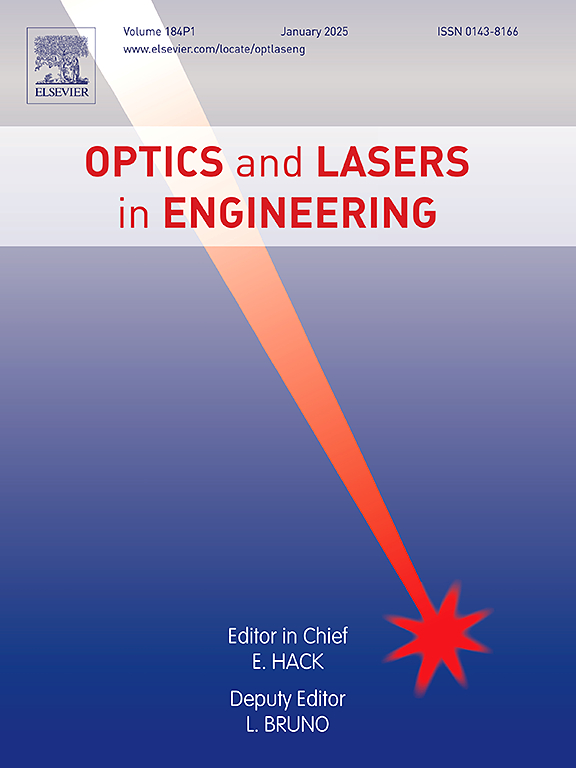Surface defect detection of planar optical components based on OPT-YOLO
IF 3.5
2区 工程技术
Q2 OPTICS
引用次数: 0
Abstract
Surface defects on optical components significantly impact imaging quality, durability, and reliability. Traditional optical and manual detection methods are inefficient and lack accuracy. Therefore, making machine vision is a crucial advancement for surface defect detection. In this article, an imaging system was constructed to generate a proprietary dataset of self-made optical component surface defects and an innovative OPT-YOLO algorithm was developed for detecting surface defects in planar optical components. The RepViTSEBlock and EMA modules were integrated with the C2f backbone network in OPT-YOLO, streamlining weights and enhancing feature extraction. To improve model expression, the MPCA attention mechanism was incorporated into the tail of backbone. Addressing background interference on defect features, ODConv was introduced into the Neck structure, replacing the Bottleneck configuration in C2f. The dysample module is also applied to refine the initial upsample structure to compensate for the problem of upsample easily losing low-level details and semantic information. For more efficient and accurate detection, SCDH detection head was adopted and CIoU was replaced with powerful-IoU, this lightweight structure accelerates convergence and improves anchor box accuracy. Finally, experimental results demonstrate that OPT-YOLO achieves mAP, Precision, and Recall scores of 0.970, 0.979, and 0.920, respectively, marking improvements of 3.2 %, 7.4 %, and 8.7 % over YOLOv8, while reducing FLOPs by 3.6 G, FPS has increased by 94. The heat map and feature map extractions confirm enhanced feature extraction capabilities, and ablation studies validate the performance gains from our enhanced modules. Overall, OPT-YOLO offers a more efficient and precise solution for planar optical component surface defect detection, highlighting its potential for industrial applications.
基于OPT-YOLO的平面光学元件表面缺陷检测
光学元件表面缺陷严重影响成像质量、耐用性和可靠性。传统的光学和人工检测方法效率低,精度低。因此,制造机器视觉是表面缺陷检测的关键进步。本文构建了一种成像系统,生成了自制光学元件表面缺陷的专有数据集,并开发了一种创新的OPT-YOLO算法来检测平面光学元件表面缺陷。RepViTSEBlock和EMA模块与OPT-YOLO中的C2f骨干网络集成,简化了权重并增强了特征提取。为改善模型表达,将MPCA注意机制植入脊椎骨尾部。为了解决缺陷特征上的背景干扰,在颈部结构中引入了ODConv,取代了C2f中的瓶颈配置。反样例模块还用于改进初始上样结构,以补偿上样容易丢失低级细节和语义信息的问题。为了提高检测效率和精度,采用了SCDH检测头,并将CIoU替换为强大的- iou,这种轻量化的结构加速了收敛,提高了锚盒精度。最后,实验结果表明,OPT-YOLO的mAP、Precision和Recall得分分别为0.970、0.979和0.920,比YOLOv8提高了3.2%、7.4%和8.7%,FLOPs降低了3.6 G, FPS提高了94。热图和特征图提取证实了增强的特征提取能力,烧蚀研究证实了我们增强模块的性能提升。总体而言,OPT-YOLO为平面光学元件表面缺陷检测提供了更高效、更精确的解决方案,凸显了其工业应用潜力。
本文章由计算机程序翻译,如有差异,请以英文原文为准。
求助全文
约1分钟内获得全文
求助全文
来源期刊

Optics and Lasers in Engineering
工程技术-光学
CiteScore
8.90
自引率
8.70%
发文量
384
审稿时长
42 days
期刊介绍:
Optics and Lasers in Engineering aims at providing an international forum for the interchange of information on the development of optical techniques and laser technology in engineering. Emphasis is placed on contributions targeted at the practical use of methods and devices, the development and enhancement of solutions and new theoretical concepts for experimental methods.
Optics and Lasers in Engineering reflects the main areas in which optical methods are being used and developed for an engineering environment. Manuscripts should offer clear evidence of novelty and significance. Papers focusing on parameter optimization or computational issues are not suitable. Similarly, papers focussed on an application rather than the optical method fall outside the journal''s scope. The scope of the journal is defined to include the following:
-Optical Metrology-
Optical Methods for 3D visualization and virtual engineering-
Optical Techniques for Microsystems-
Imaging, Microscopy and Adaptive Optics-
Computational Imaging-
Laser methods in manufacturing-
Integrated optical and photonic sensors-
Optics and Photonics in Life Science-
Hyperspectral and spectroscopic methods-
Infrared and Terahertz techniques
 求助内容:
求助内容: 应助结果提醒方式:
应助结果提醒方式:


